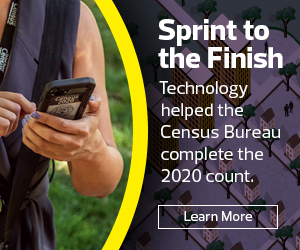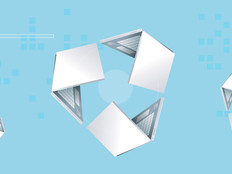How DaaS Can Benefit Your Agency
For a fixed price, CDW•G obtained, configured and delivered smartphones, tablets and laptops to the 248 Census field offices, and directly to census workers who lived in remote locations.
DaaS made sense to the bureau because the total cost of ownership was outweighed by the benefits of the DaaS model. The bureau paid for the devices it needed, used them and then returned the devices to CDW•G. In return, CDW•G was responsible for acquiring, provisioning and recovering the devices, and then clearing them of data, cleaning them and dispositioning them once they were done being used.
DaaS differs from traditional hardware leasing in a number of key ways.
By essentially retaining ownership, CDW•G had the responsibility to acquire the devices via a secure supply chain. Additionally, CDW•G was in charge of maintaining the devices, both while they were in our possession prior to the Census Bureau operations and later, while they were in the field.
DIVE DEEPER: What are the key things to know about Device as a Service?
Further, CDW•G used mobile device management tools to manage and maintain the devices, including their software and operating systems. And finally, CDW•G handled recovery of the devices and their disposition.
All of those pieces of a device’s lifecycle are complicated, and can be a time-consuming headache and costly for an agency to manage on its own. When an agency needs to deploy a large number of devices to users for a mission-critical task, working with a trusted partner can take the burden off of the agency and allow it to focus on its mission instead of tasks such as device provisioning and cleaning.
DaaS helps cut costs because the agency’s partner acquires the devices, pays to maintain them and even pays property taxes to all the municipalities and jurisdictions in which the devices are used.
Agencies are still responsible for assigning devices to users and providing customized software, but a DaaS partner can help out with most everything else related to a device’s lifecycle.
MORE FROM FEDTECH: How can configuration management specialists help your agency roll out devices?
Lessons Other Agencies Can Take from the Census Bureau
Agencies considering using the DaaS model can learn a great deal from how the Census Bureau managed this project. The agency forged a solid relationship with CDW•G for the coordination and management of the device deployment.
Planning ahead also enabled the early development of a secure supply chain, and allowed CDW•G to have early engagement with the device manufacturer.
The sheer scale of the Census Bureau project forced CDW•G’s configurations and operations teams to squeeze efficiencies out of our processes for tasks that need to be conducted many times a day, every day, to provision that many devices.
Those efficiencies can easily be applied to smaller government projects for processes ranging from automating software scripts for provisioning to quality control and even unloading the devices off pallets when shipments arrive.
The Census Bureau’s use of DaaS was a showcase of how the model can work on a grand scale. Not every government project is a once-per-decade count of every person living in the nation. But every agency could benefit from using DaaS.
This article is part of FedTech’s CapITal blog series. Please join the discussion on Twitter by using the #FedIT hashtag.













